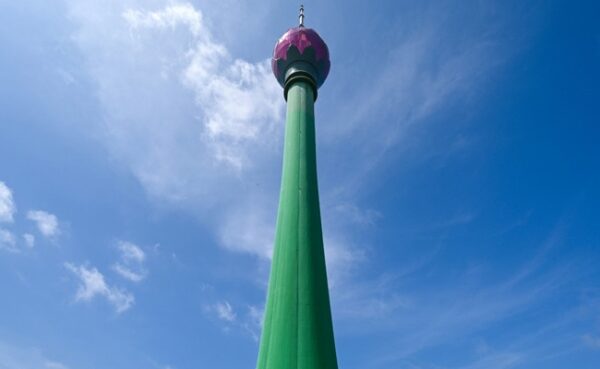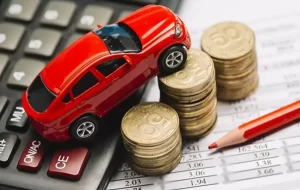
Sri Lankan Tower, Taller Than 1,000 Feet, Displays Beijing's Control
The large green and purple communication tower in Sri Lanka financed with Chinese debt which has become a symbol of the closeness of the Rajapaksa clan which is overthrown with Beijing will eventually open this week, the operator said Monday.
Lotus Tower 350 meters (1,155 feet)-seen from all Colombo and built with an estimated $ 113 million-has been disturbed by corruption claims since the construction began in 2012 under former President Mahinda Rajapaksa.
This is one of several “White Elephant” projects built with Chinese loans under Rajapaksa, Gotabaya Rajapaksa’s brothers who were overthrown from the presidency in July after months of protest over the terrible Sri Lanka economic crisis.
The State Lotus Colombo Tower Management company said they had decided to open their observational decks to visitors from Thursday and get ticket sales to minimize losses.
“We cannot close this. Maintenance costs are very large,” Chief Executive Prasad Samarasinghe told reporters. “We want to get building maintenance and turn it into an entertainment center.”
The company hopes to rent out office space and shops, including a rotating restaurant just below the observation deck that offers a dense view of capital and the Indian Ocean.
The announcer said the structure, which could not cover the island or increase the current transmission from the mountain at the Sri Lanka center, was not useful as a communication tower.
A local media outlet on Monday called it the “story of Pride and Waste that towering,” a Rias Rajapaksa project who wanted a copy of the central radio and the 405 meter TV tower Beijing.
During the decade in power from 2005-15, Mahinda Rajapaksa borrowed a lot from China for failed infrastructure projects including the deep seaport handed over to Beijing in 2017 with a 99-year rent.
Sri Lanka’s economic crisis is currently partly blamed for China’s debt which accounts for more than 10 percent of $ 51 billion in colombo in external loans.
Sri Lanka Default for her debt in April and earlier this month approved a conditional bailout of $ 2.9 billion from international monetary funds.
It depends on the Sri Lanka government who made an agreement with creditors including China to restructure the loan.
Beijing so far only offers additional loans instead of taking extraordinary loan discounts.
China has lent billions for infrastructure projects in Asia, Africa and Europe under the initiative of belts and giant roads, which according to critics are saddle countries with debt.






